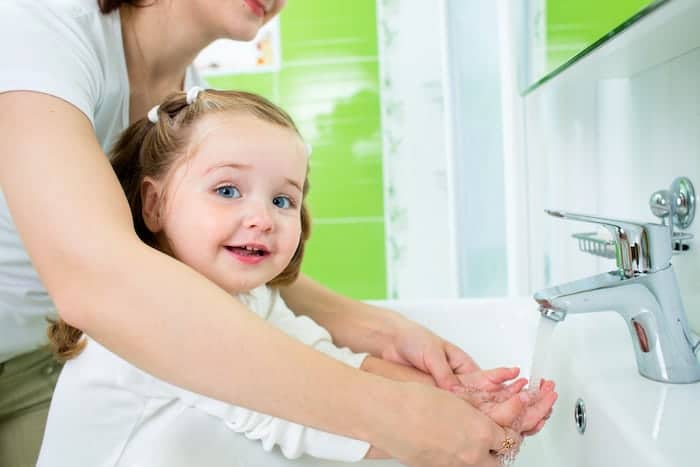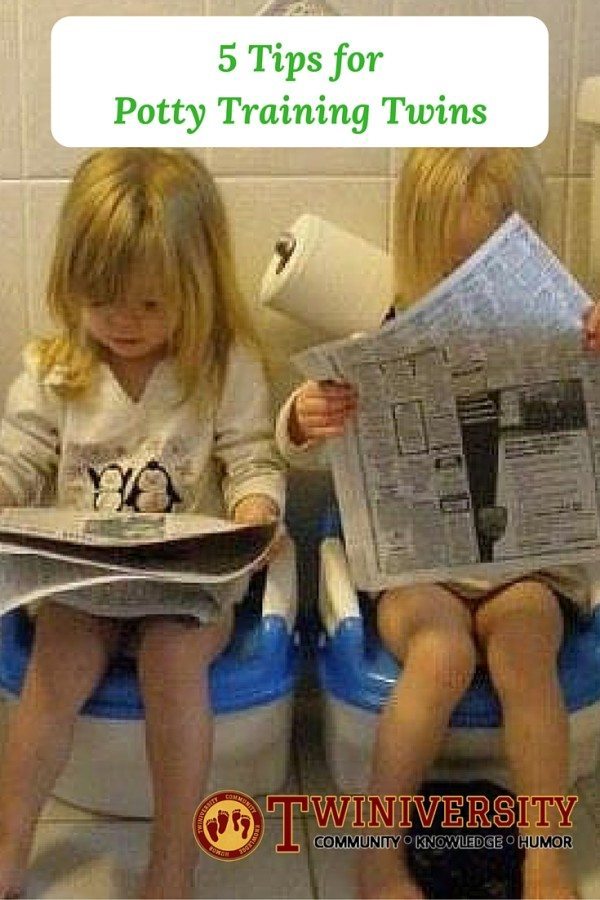Last updated on November 24th, 2023 at 10:20 pm
Hey mamas and papas, listen up! We’ve got a great article on 5 tips for potty training twins.
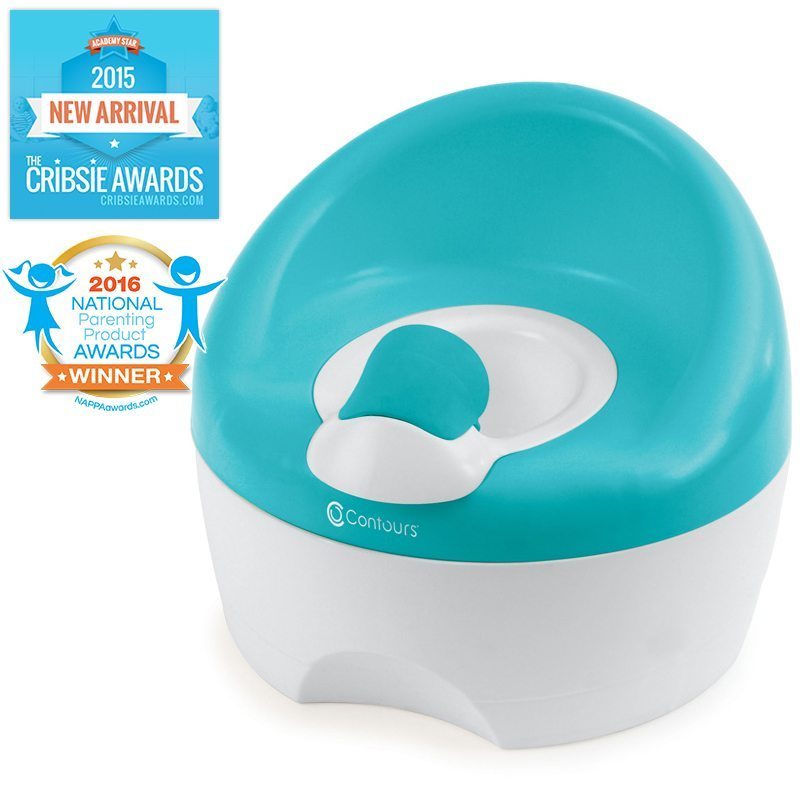
When you’re getting ready to potty train your twins you will definitely want the Bravo potty to set everyone up for success. And not only does it serve as a floor potty, but it transitions to a non-slip step stool, plus a toilet trainer to get your twins going right on the toilet. No need to buy all the extra gadgets — this potty has got you covered for all your potty training needs! Plus, the Bravo Potty comes in 3 different colors — aqua, lime, and berry — so you can assign each of your twins their very own potty by color.
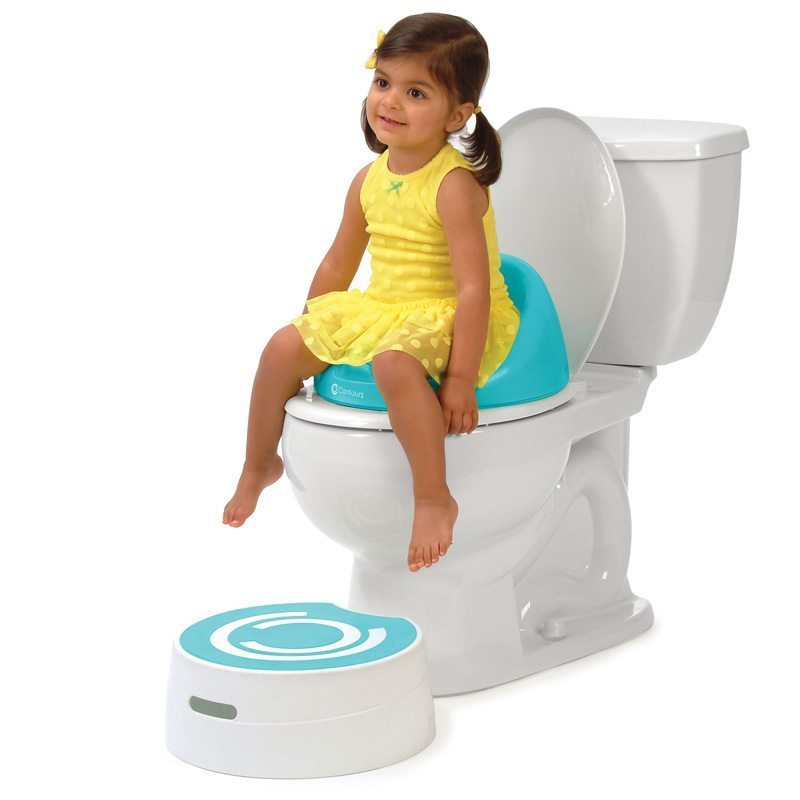
Check out this video review of the Contours Bravo 3-in-1 potty from Twiniversity founder Natalie Diaz!
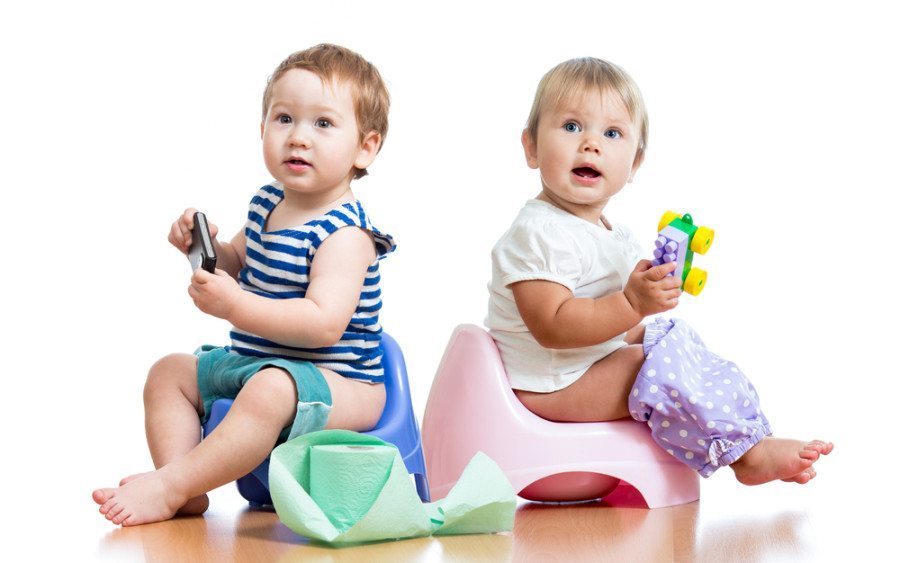
5 Tips for Potty Training Twins
1. Start the process when one of the twins begins to show genuine interest in YOUR bathroom habits!
Since children are natural imitators and strive to learn new developmental tasks, engaging children in learning to use the potty when they show interest is a great way to keep little ones motivated to practice. It’s far more effective for children to be motivated by a desire to master a new task/challenge than to use external motivators such as food or material items. With twins, when one child is interested, the “me too” instinct may kick in and before long you’ll have two interested toddlers making their break for the potty!
2. Start the process with two floor potties.
Floor potties (versus potty seats that rest on top of the toilet) are the most essential potty tool you’ll need. A floor potty helps wee ones experience early success because they are portable – no need to run down the hall to make it to the bathroom before a potty accident. Additionally, little ones often feel more comfortable on a floor potty because they are able to reach the floor instead of dangling on top of the toilet seat. Furthermore, there is no unexpected splashing like there may be when a child uses a toilet.
Finally (and most importantly!) children are physically in the “just right” position with knees slightly elevated above their hips, allowing their sphincter muscles to relax making bowel movements easier. Having two of the same potties will minimize conflict when both toddlers suddenly need to use the potty at the same time!
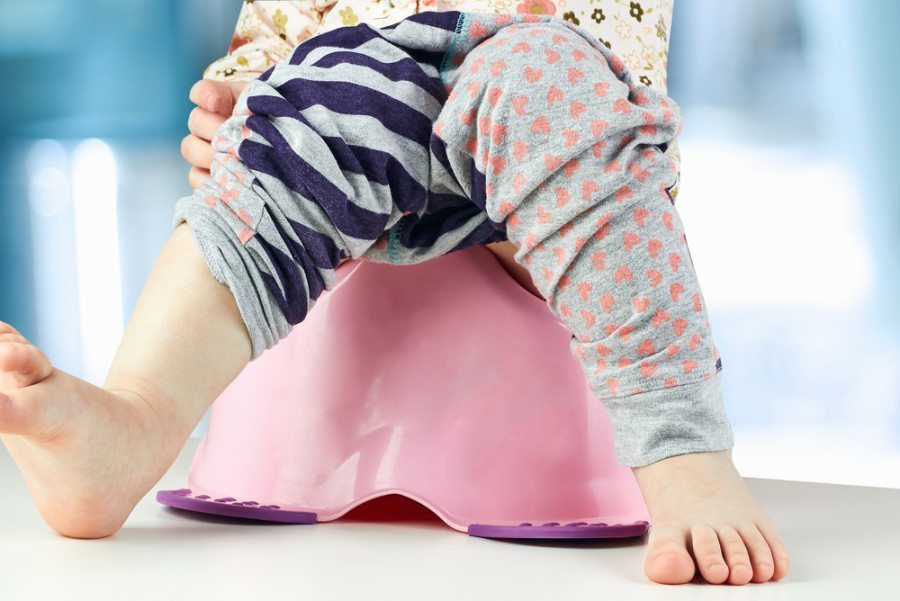
3. Rule out or treat constipation before getting started.
Constipation is the #1 culprit for difficulties with toileting. Kids who are constipated are much more likely to withhold as a result of painful defecation, which can quickly send the potty training process into a tailspin. As a result, it’s imperative that parents do the work of ensuring that little ones are having regular, comfortable bowel movements before engaging the potty training process.
The best ways to combat constipation are to feed little ones a diet rich in fiber with plenty of water and exercise. In more severe cases, consult with your pediatrician or a pediatric gastrointestinal specialist for further guidance.
4. Structure potty practice sessions.
As parents of twins well know, having routines and structure around sleep and meal times is essential! The same holds true when it comes to potty practice. It can be helpful to take children to the potty immediately before and after sleeping, as well as 30-45 minutes after a meal. If you know your child needs to use the potty, but hasn’t yet been successful, you’ll want to return every 15-20 minutes until your child uses the potty.
Following a successful trip to the potty, many children can wait another 90 minutes before the next visit, provided they haven’t had a lot to eat or drink in the meantime. If you reach the end of the day, but your child hasn’t yet had a bowel movement, a bath may be just the thing to get your child relaxed enough to poop before going to bed.
5. Have a bin of bubbles/games/toys that you only pull out for potty practice.
Young children very beautifully live in the moment without much care for what the plans are for the near future. As a result of living in the moment, it can be quite difficult for little ones to transition away from what they’re doing to head for the potty. One clear antidote to this challenge is simply to make potty practice fun. That may mean letting your children bring a toy they’re playing with to the potty so they can continue to play while seated. Or, it may mean pulling out a small bin of toys/activities/games that you reserve for potty practice time.
The objective of these toys is three-fold: to distract, relax, and keep children interested in sitting on the potty. When children are so focused on going potty, they often strain the wrong muscles or tense up their bodies. When they are distracted by a toy or game, they are more relaxed, which is precisely the state they need to be in to pee and poop. Many little ones are eager to sit down on the potty if they know that you’ll read a story or blow bubbles with them. Bubbles are a personal favorite for two reasons: First, they are universally loved by children and often ease transitions. Second, children need to take a deep breath to blow bubbles, automatically relaxing their bodies, making it easier for them to release their pee or poo.

Janeen Hayward founded swellbeing, a parenting consultancy, shortly after the birth of her first daughter in 2006. As a child development professional with a master’s degree in clinical psychology, Janeen helps parents navigate the difficult terrain around sleep and offers advice and support on a host of other developmental issues including potty training, positive discipline and sibling preparation. In short, she helps parents nurture healthy and happy children. Outside of work, Janeen has the delight of raising two young daughters with her husband. You can find her on Facebook.
Related Articles


